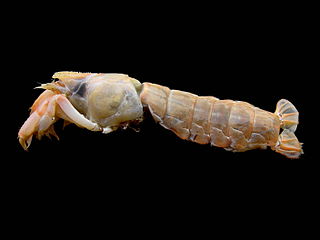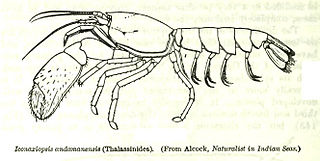
Stan Masahiko Sakai is a Japanese-born American cartoonist and comic book creator. He is best known as the creator of the comic series Usagi Yojimbo.

Reginald B. Alcock, was a Canadian politician. He represented the riding of Winnipeg South in the House of Commons of Canada from 1993 to 2006 and was a cabinet minister in the government of Prime Minister Paul Martin. Alcock was a member of the Liberal Party of Canada.

John Alcock and Arthur Brown were British aviators who, in 1919, made the first non-stop transatlantic flight. They flew a modified First World War Vickers Vimy bomber from St. John's, Newfoundland, to Clifden, County Galway, Ireland. The Secretary of State for Air, Winston Churchill, presented them with the Daily Mail prize of £10,000 for the first crossing of the Atlantic Ocean by aeroplane in "less than 72 consecutive hours". The flight carried nearly 200 letters, the first transatlantic airmail. The two aviators were knighted by King George V at Windsor Castle a week later.
Zard were a Japanese pop rock group, originally with five members, with lead vocalist Izumi Sakai as its only constant member. Izumi Sakai was also the band's core member. Zard's work was sold under the record label B-Gram Records, Inc. Their most popular and successful songs are "Makenaide" (1993) (負けないで), "Yureru Omoi" (1993) (揺れる想い), and "My Friend" (1996). As of 2023, Zard has sold over 38 million records, making them one of the best-selling music artists in Japan.

Noriko Sakai is a Japanese singer and actress. Under her former stage name Nori-P, Sakai released her first single, "Otoko no Ko ni Naritai" on February 5, 1987, nine days short of her seventeenth birthday. Over 40,000 copies of the single were sold. She is particularly popular in Hong Kong and Taiwan. Her best-selling single to date is "Aoi Usagi".

Xanthidae is a family of crabs known as gorilla crabs, mud crabs, pebble crabs or rubble crabs. Xanthid crabs are often brightly coloured and are highly poisonous, containing toxins which are not destroyed by cooking and for which no antidote is known. The toxins are similar to the tetrodotoxin and saxitoxin produced by puffer fish, and may be produced by bacteria in the genus Vibrio living in symbiosis with the crabs, mostly V. alginolyticus and V. parahaemolyticus.

Pinnotheres is a genus of crabs, including the pea crab. Many species formerly in Pinnotheres have been placed in new genera, such as Zaops ostreus, the oyster crab and Nepinnotheres novaezelandiae, the New Zealand pea crab. The species currently recognised in the genus Pinnotheres are:

Charles William Alcock was an English sportsman, administrator, author and editor. He was a major instigator in the development of both international football and cricket, as well as being the creator of the FA Cup.

Chixdiggit is a Canadian pop punk band formed in Calgary, Alberta. The band performed internationally, and released a number of studio albums, mainly with light-hearted pop-punk songs, usually about girls and relationships.

And Now... The Runaways is the fourth and final studio album by American rock band The Runaways, released in Europe on 16 December 1978 and Japan and the UK in 1979.

Pinnotheridae is a family of tiny soft-bodied crabs that live commensally in the mantles of certain bivalve molluscs and the occasional large gastropod mollusc species in genera such as Strombus and Haliotis. Tunicotheres moseri is commensal with a tunicate. The earliest fossils attributable to the Pinnotheridae date from the Danian.

Upogebiidae is a family of mud shrimp crustaceans belonging to the infraorder Gebiidea, within the order Decapoda. They are infauna, living their entire adult lives in seafloor burrows. Over 100 species have been identified, with different species often highly specialized for different types of substrate, even including sea sponges or coral. They are filter feeders, although some species also deposit feed.
Callianassa is a genus of mud shrimps, in the family Callianassidae. Three of the species in this genus have been split off into a new genus, Pestarella, while others such as Callianassa filholi have been moved to Biffarius. The genus is named after the Nereid of the Greco-Roman mythology.

Dromiidae is a family of crabs, often referred to as sponge crabs. They are small or medium-sized crabs which get their name from the ability to shape a living sponge into a portable shelter for themselves. A sponge crab cuts out a fragment from a sponge and trims it to its own shape using its claws. The last two pairs of legs are shorter than other legs and bend upward over the crab's carapace, to hold the sponge in place. The sponge grows along with the crab, providing a consistent shelter.

Eiconaxius is a genus of mud lobster that includes the following species:

Leucosiidae is a family of crabs containing three subfamilies and a number of genera incertae sedis:

Ebalia is a genus of crab in the family Leucosiidae.

Rochinia is a genus of crab in the family Epialtidae, containing the following species:

Paromola is a genus of crabs within the family Homolidae. Members of the Homolidae genus have their fifth pereiopods in a sub-dorsal position, which allows them to hold objects, such as sponges, black corals and gorgonians, over the rear half of the carapace, in a possible defence mechanism against predators.














